Navigating the World of Aftermarket Parts in Collision Repair
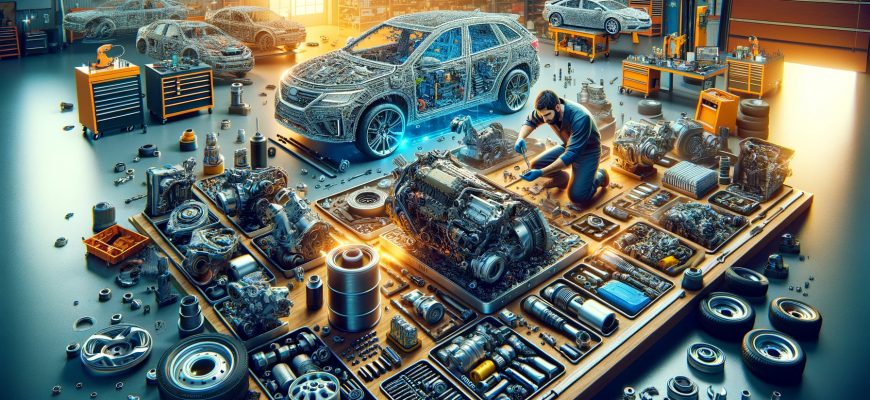
Navigating the World of Aftermarket Parts in Collision Repair
When a vehicle undergoes collision repair in Australia, one of the pivotal decisions involves the choice between Original Equipment Manufacturer (OEM) parts and aftermarket parts. Understanding the nuances of aftermarket parts is essential not only for automotive professionals but also for car owners who seek to make informed decisions about their vehicle repairs.
Understanding Aftermarket Parts
Aftermarket parts are replacement components that are not sourced from the vehicle’s original manufacturer. These parts are usually produced by third-party companies and are designed to function the same as, or similar to, OEM parts. They are prevalent in the Australian automotive repair market due to their cost-effectiveness and availability. However, the quality and performance of these parts can vary significantly, which is a crucial consideration for both safety and vehicle integrity.
Benefits and Drawbacks of Aftermarket Parts
The primary advantage of aftermarket parts is cost-effectiveness. They are generally less expensive than OEM parts, often making them a go-to choice for insurance companies and car owners looking to save on repair costs. Furthermore, aftermarket parts can reduce the total time a car spends in the shop because they are more readily available than OEM parts, which sometimes need to be ordered directly from the manufacturer.
However, the drawbacks of aftermarket parts are notable. There can be significant variability in the quality and fit of these parts, which can affect the vehicle’s safety and functionality. For instance, the Insurance Institute for Highway Safety has shown that while some aftermarket parts perform comparably to OEM parts, others may not meet these standards, potentially compromising vehicle safety.
Regulatory and Industry Standards
In Australia, the use of aftermarket parts in collision repairs is subject to specific regulations that ensure safety and performance standards are met. The Australian Automotive Aftermarket Association (AAAA) provides guidance and advocacy for standards in the automotive repair industry, ensuring that aftermarket parts are reliable and safe to use (AAAA).
Furthermore, certifications such as those from the Certified Automotive Parts Association (CAPA) play a crucial role in bolstering consumer confidence. CAPA-certified parts have undergone rigorous testing to meet industry standards for fit, form, and function, and are considered a safe choice comparable to OEM parts.
Choosing the Right Parts: A Guide for Repair Shops
For repair shops, making the right choice between OEM and aftermarket parts involves several considerations:
- Quality Assurance: It’s crucial to source aftermarket parts from reputable suppliers who offer guarantees on their parts. This ensures that the parts are reliable and will not adversely affect the vehicle’s performance.
- Certifications: Opting for parts that are CAPA certified or have other reputable endorsements can help ensure that aftermarket parts will perform well and meet safety standards.
- Technology and Information Access: Utilizing up-to-date digital platforms and databases like the SUN Collision Repair Information system can help shops access the latest OEM information and repair procedures, ensuring repairs are done correctly.
Conclusion
Choosing between OEM and aftermarket parts involves balancing cost, quality, and safety. While aftermarket parts offer a cost-effective solution, it is vital to ensure they do not compromise on quality or safety. By staying informed and adhering to industry standards, both repair shops and vehicle owners can make decisions that ensure the safety and longevity of their vehicles.
Navigating the world of aftermarket parts in collision repair requires knowledge and vigilance to ensure that every vehicle is restored to its pre-accident condition, safeguarding the performance and safety of the vehicle for its users.
READ MORE:
- Enhancing Your Car’s Longevity with Quality Collision Repairs: A Guide for Australians – This post discusses how quality collision repairs can extend the lifespan of a vehicle, emphasizing the importance of choosing the right parts and repair practices.
- The Dos and Don’ts After a Collision: A Guide for Adelaide Drivers – Provides guidance on what drivers should and shouldn’t do following a collision, including how to choose repair services and parts.
- Tips for Eco-Friendly Car Care and Collision Repair – Offers advice on maintaining your car and handling collision repairs in an environmentally friendly way, potentially touching on the types of parts used.
- The Importance of Colour Matching in Auto Body Repair – Focuses on the aesthetic aspects of collision repair, which is crucial when using aftermarket parts to ensure they match the original vehicle’s appearance.
- How to Protect Your Car’s Value with Professional Collision Repair – Discusses how professional repairs using the right parts can maintain or enhance the resale value of a car.
The Connection Between Driver Safety and Vehicle Maintenance
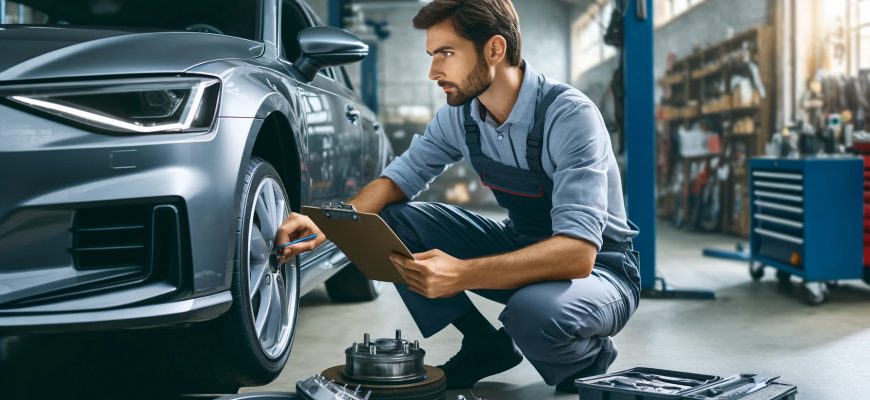
The Connection Between Driver Safety and Vehicle Maintenance
As drivers, we often consider vehicle maintenance as merely another line on our budget, but the truth is, the state of your car plays a critical role in your safety on the road. In Australia, where varied terrain and weather conditions can challenge the best of drivers, the importance of vehicle maintenance cannot be overstated. This article explores the vital connection between regular vehicle upkeep and driver safety, underscoring why maintaining your car is not just about vehicle longevity, but ensuring every journey is as safe as possible.
The Importance of Vehicle Maintenance in Ensuring Safety
Recent statistics from road safety agencies in Australia reveal a startling correlation between vehicle faults and accident rates. For instance, faulty brakes and worn tyres are frequently cited in collision reports. Preventative maintenance is not just a recommendation; it’s a crucial component of driver safety. It ensures that vehicles are in optimal condition to respond to driver inputs and external conditions effectively. The Australian Transport Safety Bureau highlights that many road accidents could be prevented with proper vehicle care, pointing out that neglected maintenance can lead to catastrophic failures.
Brakes
Regular brake checks are vital. Worn brake pads or damaged discs can significantly increase stopping distances, putting you and others at risk. The National Roads & Motorists’ Association (NRMA) advises checking your brake pads during regular servicing and replacing them if thickness is below 1.5 mm.
Tyres
Tyres are your only contact with the road. Poorly maintained tyres, with insufficient tread or incorrect pressure, compromise handling and increase braking distances. The Department of Transport and Main Roads recommends regular checks to ensure your tyres comply with the legal tread depth of 1.5mm and are inflated according to manufacturer specifications.
Lights and Signals
Effective communication with other drivers depends heavily on properly functioning lights and signals. Regular checks to ensure that all lights are operational and bright enough are crucial, especially for driving under low visibility conditions in areas like Melbourne and Tasmania.
Windshield and Wipers
Clear visibility is crucial and often taken for granted until you’re caught in a sudden downpour with ineffective wipers. Ensuring that your windshield is crack-free and wipers are in good condition is essential, especially in regions prone to frequent rain and fog.
Tips for Regular Vehicle Maintenance
To keep your vehicle in safe working order, consider these tips:
- Regular Professional Check-ups: Schedule at least annual check-ups with a certified mechanic to catch potential issues before they become serious.
- Self-Inspections: Learn to perform basic inspections on your vehicle. Check your oil levels, tyre pressures, and lights regularly.
- Follow Manufacturer’s Guidelines: Always adhere to the manufacturer’s maintenance schedule as outlined in your vehicle’s manual.
Conclusion
Maintaining your vehicle is a fundamental aspect of safe driving. Regular checks and timely repairs not only extend the life of your car but crucially, they ensure that your vehicle remains safe in all driving conditions. Whether it’s a daily commute in Sydney or a cross-country trek through the Outback, the state of your vehicle plays a pivotal role in your safety. Remember, a well-maintained car is a safer car.
Other Sources
Check out these other articles from DPP
- The Importance of Colour Matching in Auto Body Repair – Discusses the importance of proper colour matching in repairs and how it impacts the overall safety and integrity of the vehicle.
- How to Protect Your Car’s Value with Professional Collision Repair – Focuses on the benefits of professional repair services post-collision to ensure safety standards are met.
- The Future of Collision Repair in Adelaide: Innovations to Watch – Looks into new technologies and methods in collision repair that enhance vehicle safety.
- Dealing with the Emotional Aftermath of a Car Accident – Offers insights into the psychological impact of car accidents and the importance of a safe, fully restored vehicle for peace of mind.
- The Benefits of Regular Vehicle Maintenance and Inspections: A Guide for Australian Drivers – Provides a comprehensive guide on how regular maintenance can prevent accidents and enhance driver safety.
Enhancing Your Car’s Longevity with Quality Collision Repairs: A Guide for Australians
Maintaining the longevity of your car is crucial, not just for its resale value but for your safety on the road. In the wake of an accident, the path to restoration involves more than just cosmetic fixes—it’s about ensuring your vehicle operates safely and efficiently, just like it did pre-collision. This article dives deep into how quality collision repairs can significantly enhance your car’s longevity, providing Australian car owners with essential insights and guidance.
Understanding Collision Repair in Australia
Collision repair goes beyond smoothing out a dent or repainting a scratch. It encompasses a wide range of services, from realigning the car’s frame to replacing any broken parts. In Australia, the standards for these repairs are stringent, ensuring that vehicles are not just visually appealing post-repair but are also safe to drive. Accredited and certified repair centres follow guidelines set by Australian Standards (AS) and the Motor Vehicle Insurance and Repair Industry Code of Conduct, offering peace of mind to car owners about the quality of repair work.
The Impact of Quality Repairs on Car Longevity
Quality collision repairs play a pivotal role in preserving the structural integrity of your car. Professional repair services ensure that every aspect of the vehicle, from its mechanical components to safety features like airbags, is restored to its original condition. This meticulous approach helps in averting potential future problems, such as rust on the bodywork or unseen damage that could compromise the car’s performance.
Conversely, subpar repairs can lead to a host of issues, including weakening the vehicle’s frame, making it more susceptible to damage in future collisions. Moreover, poorly repaired cars often suffer from reduced fuel efficiency and higher wear and tear, leading to more frequent and costly repairs down the line.
Choosing the Right Collision Repair Centre
Selecting the right repair centre is paramount. Here’s how you can ensure you’re choosing a reputable service:
- Look for Certifications: Accredited repairers, recognized by bodies such as the Victorian Automobile Chamber of Commerce (VACC) or the Motor Traders’ Association of NSW (MTA NSW), adhere to high standards.
- Check Reviews and References: Past customer experiences can offer valuable insights into the quality of repair work and customer service.
- Verify the Use of Genuine Parts: Genuine parts ensure your car remains as close to its original condition as possible, preserving its safety standards and value.
- Detailed Quote and Transparency: A reputable repairer will provide a comprehensive quote detailing the work to be done, ensuring transparency and no hidden costs.
Maintenance Tips Post-Repair
After your vehicle has been repaired, proper maintenance is crucial to ensure its longevity. Regular check-ups, especially in the first few months following the repair, can help catch any potential issues early. Monitoring the repaired areas for signs of wear or failure is essential. Additionally, maintaining a detailed record of the repair work can be invaluable, not only for your own reference but also for potential future buyers, thus enhancing the resale value of your car.
Quality collision repairs are not just about fixing the damage but are an investment in your car’s future. By choosing the right repair centre and following through with proper maintenance, you ensure that your vehicle remains safe, efficient, and reliable. Remember, in the aftermath of an accident, prioritize quality and professionalism to guarantee your car’s longevity. Your vehicle is more than just a means of transportation; it’s a companion on the road that deserves the best care after a collision.
In a world where cars are a significant part of our daily lives, taking the time and effort to ensure quality collision repairs can make all the difference. For car owners across Australia, this guide serves as a roadmap to navigating post-collision repairs, emphasizing the importance of quality, safety, and care in enhancing your car’s longevity.
- Dealing with the Emotional Aftermath of a Car Accident – This post discusses the psychological impact of car accidents and offers guidance on navigating emotional recovery, emphasizing the importance of professional help and self-care strategies.
- Worn tyres: Is Saving A Few Dollars Worth The Risk On The Road? – Highlighting the dangers of using part-worn tyres, this article underscores the significance of proper tyre maintenance and the potential safety risks associated with cost-cutting on such critical components.
- How to Ensure You’re Getting Genuine Parts – Focused on the importance of using genuine parts for vehicle repairs, this entry provides tips on how to verify part authenticity, stressing how genuine parts contribute to the safety, performance, and longevity of your vehicle.
- Top 5 Questions to Ask Your Collision Repair Technician – Offering advice on selecting a reputable collision repair technician, this post lists essential questions to ensure quality repairs, underlining the importance of certifications, detailed repair estimates, and understanding how repairs affect your car’s warranty.
- Getting Your Car Back To New – Faster Than You Ever Dreamed Possible! – This article showcases how Dynamic Paint N Panel prioritises top quality workmanship and customer care, illustrating their commitment to restoring vehicles to their prime condition and ensuring customer satisfaction and vehicle safety.
These articles offer a wealth of information relevant to maintaining and enhancing your car’s longevity through careful maintenance, the use of genuine parts, and the selection of qualified repair services.
The Dos and Don’ts After a Collision: A Guide for Adelaide Drivers
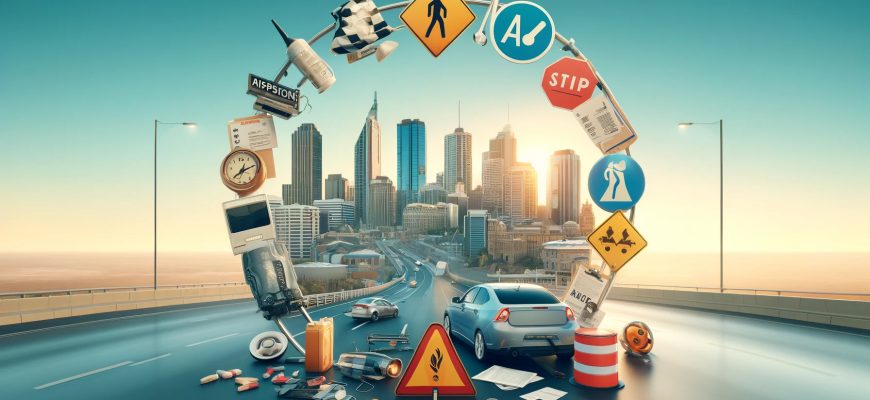
The Essential Guide to Navigating Post-Collision Steps for Adelaide Drivers
Accidents on the road can happen to anyone, anywhere, even in Adelaide’s relatively calm traffic. Whether it’s a minor fender bender or a more severe collision, knowing what to do in the immediate aftermath can significantly affect the resolution of any damages or injuries. This comprehensive guide offers detailed advice on the dos and don’ts following a vehicle collision, helping you navigate these challenging times with confidence.
Prioritising Safety and Immediate Steps
DO Seek Immediate Medical Attention
The first priority after any accident is the safety and well-being of all involved. Assess yourself and any passengers for injuries. Even if injuries seem minor or non-existent, shock can often mask pain. Call emergency services for a medical check-up if there’s the slightest concern .
DON’T Move Injured Parties
Unless there’s an immediate danger, such as fire, do not move anyone injured. Moving someone without proper technique could exacerbate potential injuries. Wait for emergency personnel to arrive.
DO Call the Police to the Scene
It’s crucial to have an official report, especially for insurance claims and legal matters. The police document the scene and provide an unbiased report of the event, which is invaluable later on.
Information Exchange and Documentation
DO Exchange Necessary Information
Swap names, addresses, phone numbers, and insurance details with the other driver. Stay factual and limit conversation about the accident to prevent any inadvertent admissions of guilt.
DO Document Everything
Take photos of the scene, including all vehicles involved, any visible damages, and road conditions. These photos can provide critical evidence for insurance claims and possible legal actions.
Post-Accident Actions
DO Report the Incident to Your Insurance
Notify your insurer about the accident as soon as possible. Be honest and detailed about the event, providing them with the police report and photographic evidence to support your claim.
DON’T Sign Anything Without Understanding It
Be wary of signing any documents, especially from the other party’s insurance company, without fully understanding the implications. When in doubt, seek legal advice.
Repair and Recovery
DO Choose a Reputable Repair Service
Select a trusted auto collision repair service for your vehicle. Quality repairs are crucial for the safety and longevity of your car post-accident.
DON’T Ignore Minor Damages
Even small damages can lead to bigger problems down the line. Ensure a thorough check and repair any damages, no matter how insignificant they may seem.
Long-term Considerations
DO Consider Legal Counsel
If you’re facing significant losses, injuries, or complications with insurance claims, consulting with a car accident lawyer can help protect your interests.
DON’T Rush Into Settlements
Take your time to understand the full extent of your damages and injuries before agreeing to any settlements. Rush decisions can lead to underselling your claim.
Conclusion
Navigating the aftermath of a car collision can be overwhelming, but being prepared can make a significant difference in the outcome. By following these detailed dos and don’ts, drivers in Adelaide and across Australia can ensure their safety, protect their rights, and facilitate the recovery and claims process. Remember, when in doubt, professional advice from legal and insurance professionals can provide the clarity and support needed to move forward effectively.
Stay Prepared, Stay Safe
In the unpredictable realm of road travel, being equipped with the knowledge of how to act post-collision is invaluable. This guide aims to prepare Adelaide drivers for any unforeseen events, ensuring that they can handle the situation with confidence and care.
On the Dynamic Paint N Panel website, under the “News & Media” section, I found several posts that are relevant to the topic of post-collision guidance and car maintenance:
- “The Importance of Colour Matching in Auto Body Repair” discusses the critical aspect of ensuring repaired areas on a vehicle match the original color precisely to maintain its aesthetic and value.
- “How to Protect Your Car’s Value with Professional Collision Repair” focuses on the importance of quality repairs after an accident to preserve the vehicle’s resale value.
- “The Future of Collision Repair in Adelaide: Innovations to Watch” explores upcoming technologies and methods in the collision repair industry that could enhance the repair process.
- “Dealing with the Emotional Aftermath of a Car Accident” offers insights into the psychological impact of car accidents and how individuals can cope with the stress and trauma.
- “The Benefits of Regular Vehicle Maintenance and Inspections: A Guide for Australian Drivers” emphasizes the importance of routine maintenance to ensure vehicle safety and efficiency.
These articles provide a mix of technical advice, industry insights, and personal well-being tips related to vehicle ownership and post-accident actions. For more detailed information on these topics, follow the links above.
The Importance of Colour Matching in Auto Body Repair

In the world of auto body repair, precision is everything. From the meticulous dismantling of damaged parts to the seamless application of the final clear coat, every step requires a keen eye and a steady hand. Among these critical steps, one that stands out for both its technical necessity and its aesthetic impact is colour matching. Particularly for Australian car owners, where the harsh sun can reveal even the slightest mismatch in hues, getting the colour just right is not just a matter of pride—it’s a testament to the quality of the repair work.
The Science of Colour Matching
At first glance, matching the colour of car paint might seem straightforward. However, the reality is far from simple. Automotive paint is not a single hue but a complex formula composed of base coats, and often, metallic or pearlescent finishes that add depth and character to the colour. Achieving the perfect match requires not just a good eye but also advanced technology. Today, spectrophotometers—a type of instrument that measures colour with incredible accuracy—are used in leading auto body shops. These devices analyze the colour of the car’s existing paint and provide a formula for mixing paint that matches precisely, taking into account how light and angle affect our perception of colour.
Why Colour Matching Is Essential in Auto Body Repair
The importance of colour matching extends beyond the surface. For one, the aesthetic appeal of a car is paramount; a mismatched paint job is immediately noticeable and detracts from the vehicle’s appearance. But the implications go deeper. A car’s resale value can be significantly impacted by the quality of its paint job. Accurate colour matching ensures that the vehicle maintains its value over time. Moreover, there’s a safety consideration; a uniform appearance without glaring colour differences makes previous damage less noticeable, which could be crucial for future inspections or sales. Finally, consumer trust hinges on the attention to detail that auto body shops demonstrate, with colour matching being a clear indicator of their dedication to excellence.
Challenges in Colour Matching
Despite advances in technology, colour matching in auto body repair faces several challenges. Different production runs of the same paint colour can have slight variations, making an exact match challenging. The aging process also affects vehicle paint, with factors like sunlight, chemicals, and wear altering the original hue over time. Furthermore, achieving a perfect match requires not just the right tools but also a significant level of skill and experience. Technicians must understand the intricacies of paint composition and application techniques, which can vary widely across different car models and brands.
Best Practices in Colour Matching for Auto Body Repair
Given these challenges, auto body repair professionals follow a set of best practices to ensure the best possible outcome. Preparation is key; the surface must be properly primed to ensure that the new paint adheres well and shows its true colour. Custom colour mixing, often done on-site, allows technicians to adjust the formula based on the specific shade and finish of the vehicle’s existing paint. Continuous learning and adaptation are also vital, as new paint formulations and application methods are constantly being developed. For car owners, choosing a repair service that invests in the latest technology and training in colour matching is crucial.
The significance of colour matching in auto body repair cannot be overstated. It is a complex process that demands precision, expertise, and the right technology. For Australian car owners, where the vibrant sun can amplify any discrepancies, ensuring a perfect match is essential. It affects not just the car’s aesthetic appeal but also its value and the trust that consumers place in auto repair services. As the automotive industry continues to evolve, the dedication to achieving the perfect colour match remains a hallmark of quality and craftsmanship in auto body repair.
How to Protect Your Car’s Value with Professional Collision Repair

In the aftermath of a collision, your car’s value can significantly diminish. Not only does the physical damage affect its aesthetic appeal, but the mere history of an accident can reduce its market value. Fortunately, professional collision repair can mitigate these effects, restoring both the appearance and the integrity of your vehicle. This guide, tailored for Australian car owners, navigates the essentials of preserving your car’s value post-collision.
Understanding Car Value Post-Collision
When a car is involved in a collision, its value instantly decreases—a phenomenon known as diminished value. This depreciation is beyond the physical repair costs; it reflects the potential future issues and reduced desirability. Australian automotive experts affirm that a well-documented repair history, especially with professional repairs, can lessen this impact.
The Role of Professional Collision Repair
Professional collision repair goes beyond mere cosmetic fixes. It involves a thorough restoration of the vehicle’s structural and aesthetic integrity, adhering to the manufacturer’s specifications. In Adelaide, choosing a repair centre with accreditation, such as those recognised by I-CAR Australia, ensures that your vehicle receives care that upholds industry standards.
Selecting the Right Collision Repair Service
Choosing the right repair service is crucial. Look for facilities with certifications, positive customer reviews, and warranties on their work. Prioritise those that use genuine or Original Equipment Manufacturer (OEM) parts to maintain your car’s authenticity and value. Websites like I-CAR Australia provide listings of accredited repair centres.
Insurance Considerations
Navigating insurance claims is a critical step in ensuring professional repair quality. In Australia, engaging with insurers who have partnerships with accredited repairers can simplify this process. It’s essential to understand your policy’s coverage and insist on quality repairs, as outlined by the Australian Competition & Consumer Commission (ACCC).
Protecting Your Car’s Value Through Repair Quality
Quality repairs can significantly influence your car’s resale value. Ensuring that the repair centre uses the latest repair technologies and adheres to the highest standards maintains your vehicle’s value. Notable Australian repair centres often showcase their work, providing a benchmark for what you should expect.
Maintenance and Care Post-Repair
After your car has been professionally repaired, ongoing maintenance is essential. Regular check-ups, adhering to the manufacturer’s maintenance schedule, and promptly addressing any issues will keep your car in optimal condition, preserving its value over time.
Future-Proofing Your Vehicle’s Value
Consistent, professional care of your vehicle, including routine maintenance and addressing wear and tear, plays a significant role in its value retention. Keeping a detailed record of all services and repairs can add to the vehicle’s resale appeal, assuring potential buyers of its well-maintained condition.
The impact of a collision on your car’s value can be mitigated with professional repair services. By choosing accredited repair centres, insisting on quality parts, and understanding your insurance coverage, you can preserve, if not enhance, your vehicle’s market value. Remember, the longevity and performance of your car, post-repair, depend significantly on regular maintenance and the choices you make in its care.
While this article serves as a guide, always refer to reputable sources for the most current information and advice. The Australian Automotive Aftermarket Association, the ACCC, and I-CAR Australia offer invaluable resources for vehicle owners navigating post-collision repairs and maintenance.
References
- I-CAR Australia – for information on certified repair professionals.
- Australian Automotive Aftermarket Association – for insights into the importance of using quality parts and services.
- Australian Competition & Consumer Commission (ACCC) – for consumer rights and advice regarding service guarantees and warranties.
- Choice – for comparisons and reviews of insurance options and repair services.
Dealing with the Emotional Aftermath of a Car Accident
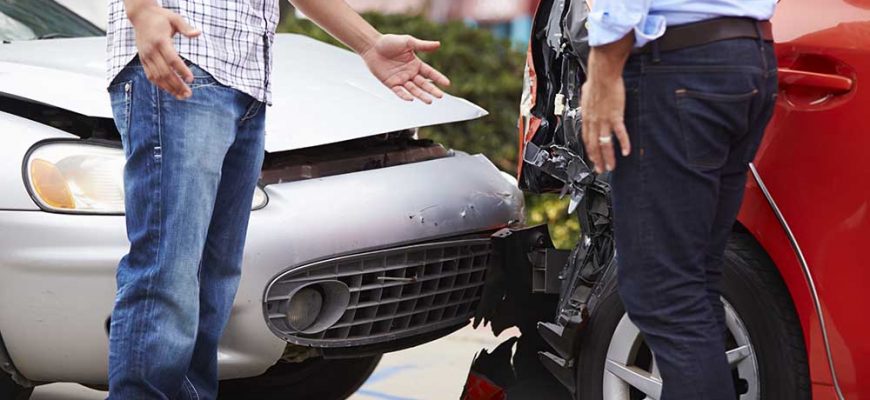
Every year, thousands of Australians experience the trauma of a car accident. While the immediate focus often lies on physical injuries, the emotional and psychological scars can linger long after the physical wounds have healed. Understanding and addressing the emotional aftermath is crucial for a full recovery. This guide aims to navigate the complex journey of emotional healing post-accident, offering support, advice, and resources available in Australia.
The Psychological Aftermath
Car accidents can leave a profound impact on one’s mental health, invoking a range of emotional responses including shock, anger, guilt, and a pervasive sense of vulnerability. For some, these feelings evolve into more severe conditions such as anxiety, depression, or even Post-Traumatic Stress Disorder (PTSD). Recognizing the signs of PTSD, which may include flashbacks, nightmares, and severe anxiety, is a crucial step in seeking the necessary help and beginning the healing process.
Recognising Symptoms
The emotional toll of a car accident can manifest in various ways. Symptoms to watch for include difficulty sleeping, intrusive thoughts about the accident, heightened irritability, and avoidance of driving or talking about the incident. These signs indicate that the emotional impact of the accident is significant and that professional help may be needed to navigate the recovery process effectively.
Navigating the Path to Emotional Recovery
Seeking Professional Help
Acknowledging the need for help is a sign of strength. In Australia, resources like the Australian Psychological Society’s ‘Find a Psychologist’ service and Beyond Blue provide access to professionals specializing in trauma. Engaging with a psychologist or counsellor can equip you with strategies to manage your emotions and facilitate a healthier recovery process.
Self-Care Strategies
In the wake of an accident, self-care is paramount. Establishing a routine, engaging in physical activity, and dedicating time to hobbies that bring joy can significantly impact emotional well-being. Practices such as mindfulness and meditation can also offer solace, helping to manage stress and anxiety. Remember, allowing yourself time to heal is not only necessary but vital.
Building a Support Network
Leaning on Loved Ones
The value of a strong support network cannot be overstated. Sharing your feelings with friends and family can provide comfort and reduce the sense of isolation that often accompanies trauma. Being open about your struggles allows your loved ones to offer the support you need during this challenging time.
Community and Online Resources
For those seeking the camaraderie of individuals with shared experiences, numerous support groups and online forums cater to accident survivors. Organizations like Lifeline Australia and the Black Dog Institute offer emotional support and resources to those struggling with the aftermath of traumatic events.
Legal and Financial Considerations
Dealing with insurance claims and potential compensation can add an additional layer of stress to an already tense situation. It’s advisable to consult with legal professionals specializing in car accidents and compensation law to navigate these complexities. This not only helps in understanding your rights but can also ease the burden of financial uncertainties post-accident.
Moving Forward After a Car Accident
Regaining Confidence Behind the Wheel
For many, the thought of driving again can be daunting. Taking small steps, such as short drives in familiar areas with a supportive companion, can help rebuild confidence. Enrolling in a refresher driving course can also provide a structured way to regain your driving skills and confidence. It’s essential to move at your own pace and acknowledge that regaining confidence is a gradual process.
Conclusion
The road to recovery after a car accident can be long and fraught with challenges. However, understanding the emotional impact, recognizing the symptoms of distress, and taking proactive steps towards healing can significantly aid in the recovery process. Remember, seeking professional help, leaning on the support of loved ones, and utilizing available resources can make a substantial difference in overcoming the trauma of a car accident.
By addressing both the emotional and physical aftermath, individuals can embark on a comprehensive path toward recovery, eventually finding their way back to a sense of normalcy and well-being.
Resources for Further Support
- Beyond Blue – Support for anxiety, depression, and suicide prevention
- Lifeline Australia – 24-hour crisis support and suicide prevention
- Black Dog Institute – Resources on mental health
This guide aims to serve as a comprehensive resource for Australians dealing with the emotional aftermath of a car accident, providing the necessary tools and information to navigate the path to recovery.
The Benefits of Regular Vehicle Maintenance and Inspections: A Guide for Australian Drivers
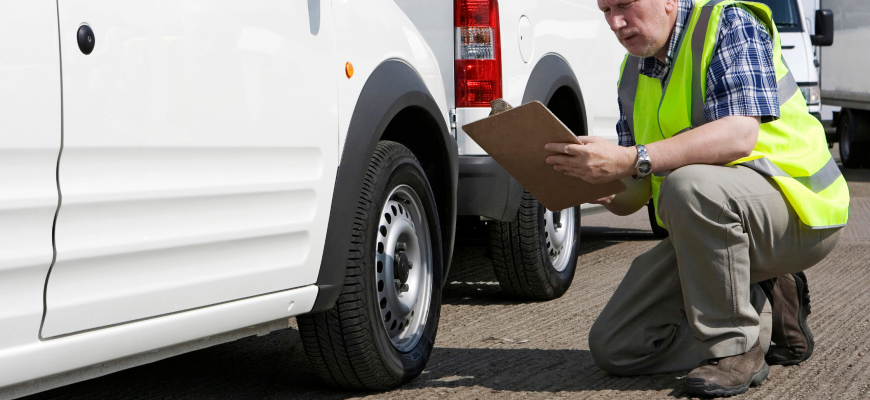
In the diverse landscape of Australia, from bustling urban streets to remote outback roads, the reliability of your vehicle is not just a matter of convenience—it’s a crucial aspect of safety and efficiency. Regular vehicle maintenance and inspections stand as the cornerstone of ensuring your car remains in optimal condition, ready to face the unique challenges of Australian driving conditions. This comprehensive guide delves into the myriad benefits of keeping up with your vehicle’s maintenance schedule, offering insights that promise to enhance performance, safety, and ultimately save you money.
The Importance of Regular Vehicle Maintenance
Safety: At the heart of regular vehicle maintenance is the assurance of safety. Essential components such as brakes, tyres, and lights play pivotal roles in preventing accidents. For instance, replacing worn-out brake pads can mean the difference between a safe stop and a potentially hazardous situation on the road.
Performance: Routine checks ensure your vehicle operates at its best. Regular servicing can improve fuel efficiency—a key consideration given the vast distances often travelled in Australia. Moreover, it enhances the vehicle’s reliability, ensuring it performs well in various climates, from the humid tropics to arid deserts.
Cost Savings: Preventative maintenance is financially savvy. Identifying and rectifying issues early can prevent costly repairs down the line. For example, changing the oil and filters at recommended intervals protects the engine, avoiding expensive overhauls.
Resale Value: A well-maintained vehicle commands a higher resale value. Regular servicing records act as a testament to the care you’ve invested in your vehicle, making it more attractive to prospective buyers.
Key Vehicle Maintenance Checks
Engine Oil and Filters: Regular oil changes are the lifeblood of your vehicle’s engine, ensuring it runs smoothly and efficiently. Similarly, clean filters support optimal performance of the engine and cabin air quality.
Tyres: Tyre maintenance is critical for safety and efficiency. Proper inflation maximises fuel economy and handling, while regular checks of tread depth ensure your vehicle remains safe in varied driving conditions.
Brakes: The braking system requires regular inspection to safeguard against failure. Worn pads or discs can significantly impact stopping distances, particularly in emergency situations.
Fluid Levels: Adequate fluid levels are vital for the vehicle’s operation. Coolant levels, for example, are crucial to prevent overheating, while brake and transmission fluids ensure smooth operation of their respective systems.
Battery: A healthy battery is essential, especially considering the technological demands of modern vehicles. Regular checks help avoid unexpected failures, ensuring reliability.
The Role of Professional Inspections
While DIY checks cover the basics, professional inspections offer a deeper dive into your vehicle’s health. Mechanics possess the expertise to spot potential issues that might be overlooked by the untrained eye. These thorough assessments can preempt failures in systems like the suspension, exhaust, and electrical, offering peace of mind that your vehicle is in top condition.
How Often Should You Service Your Vehicle?
Service frequency can vary based on the make, model, age, and how you use your vehicle. However, adhering to the manufacturer’s recommended service intervals is a good rule of thumb. For vehicles frequently exposed to harsh conditions—such as driving on unsealed roads or in extreme climates—more frequent checks may be necessary.
Maintaining and inspecting your vehicle regularly is an indispensable practice for any Australian driver. It enhances safety, ensures optimal performance, and saves money in the long run. By adopting a proactive approach to vehicle care, you can enjoy the confidence that comes with a reliable and efficient vehicle.
Seasonal Car Care: Preparing Your Vehicle for Adelaide’s Weather Conditions
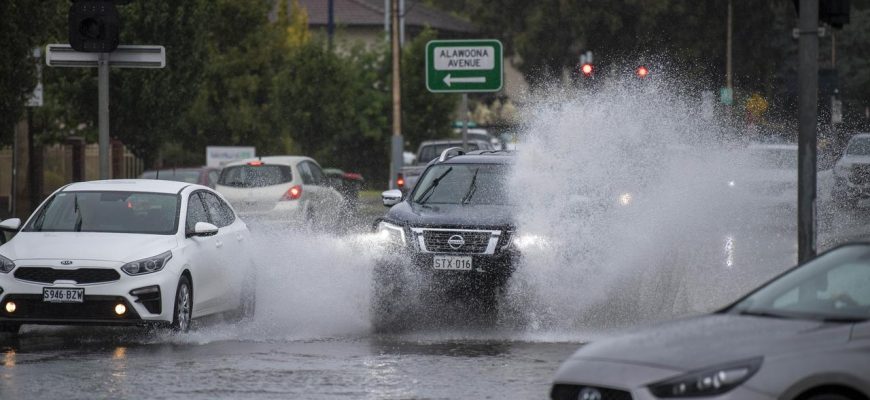
In Adelaide, where the sun blazes in the summer and winter brings its mild, wet embrace, the need for seasonal car care becomes paramount. The fluctuating weather conditions demand a proactive approach to vehicle maintenance, ensuring safety, longevity, and optimal performance. This guide offers a comprehensive look into preparing your vehicle for Adelaide’s unique climate, ensuring you navigate the seasons smoothly.
Understanding Adelaide’s Weather Patterns
Adelaide experiences a Mediterranean climate, characterized by hot, dry summers and cool, wet winters. Such conditions pose specific challenges for vehicles, from the stress of intense heat to the corrosion potential of increased moisture. Recognizing these seasonal impacts is the first step in tailoring your car care routine to suit Adelaide’s weather.
Preparing Your Vehicle for Summer
Cooling System Maintenance
The scorching Adelaide summer puts significant stress on your vehicle’s cooling system. A malfunctioning system can lead to overheating and severe engine damage. Start the season by checking the coolant level and ensuring it’s replaced as per the manufacturer’s recommendations. Inspecting the radiator for leaks and ensuring the cooling fan operates correctly can prevent overheating during those peak summer days.
Tyre Care and Air Conditioning Maintenance
Tyres react to temperature changes; hot roads can increase tyre pressure, leading to uneven wear or even blowouts. Check your tyre pressure regularly, adjusting according to the manufacturer’s guidelines. Additionally, a functioning air conditioning system is your best ally against the Adelaide heat. Servicing your A/C system, including a check for refrigerant leaks and ensuring the compressor is in good working condition, can make your summer drives more bearable.
Preparing Your Vehicle for Winter
Battery Care
Winter’s mild chill in Adelaide can still affect your car’s battery. Cold conditions slow down the chemical reactions within, reducing power output. A battery load test can ascertain its health, ensuring you’re not left stranded on a cold morning. Keep the battery terminals clean and check for signs of wear or damage.
Wiper Blades and Lights
Visibility is crucial in winter, with its longer nights and potential for rainy weather. Ensure your lights are all functioning correctly, clean, and bright enough to illuminate your path. Wiper blades should be in top condition to deal with the increased rain; if they’re leaving streaks, it’s time for them to be replaced.
Year-Round Maintenance Tips
Routine checks and maintenance are the backbone of vehicle care, irrespective of the season. Regular oil and filter changes, brake inspections, and ensuring your emergency kit is stocked and in the car, can avert many potential problems. Familiarity with your vehicle’s maintenance schedule, as outlined in the owner’s manual, is invaluable for keeping your car in peak condition through Adelaide’s seasons.
Conclusion
The changing weather conditions in Adelaide do not merely signify a shift in wardrobe but also in how we care for our vehicles. By understanding the specific challenges posed by the climate and undertaking targeted maintenance, you can ensure your car remains a reliable companion, ready to face the heat of summer or the cool damp of winter. The road ahead is as smooth as your commitment to your vehicle’s care.
List of Citations
- For up-to-date climate and weather patterns, always refer to the Bureau of Meteorology (Australia).
- The Royal Automobile Association of South Australia (RAA) offers invaluable advice on car care specific to Adelaide’s climate.
- For model-specific advice, your vehicle’s manufacturer maintenance guidelines are the go-to resource.
By keeping informed and proactive, your vehicle can weather Adelaide’s seasons, ensuring every journey is safe and enjoyable.
Navigating Car Insurance: Comprehensive vs. Third Party in Collision Repair
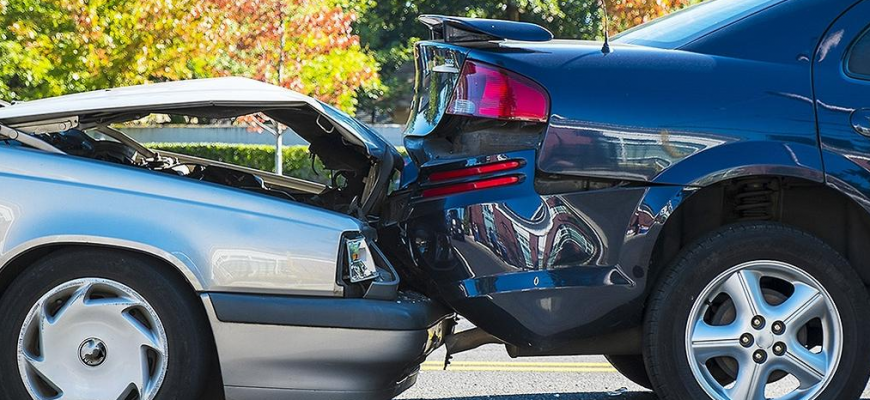
Understanding the nuances of car insurance can be a daunting task, especially when faced with the aftermath of a collision. In Australia, drivers have several insurance options, but the choice between comprehensive and third-party insurance becomes particularly significant when it comes to collision repairs. This article aims to demystify these options, providing you with the knowledge to make an informed decision.
Understanding Car Insurance in Australia
Car insurance is an essential consideration for every Australian driver. It not only offers financial protection against unexpected incidents but also is a legal requirement in some forms. The Australian car insurance market offers a range of products, including comprehensive insurance, third-party property damage, third-party fire and theft, and compulsory third party (CTP) insurance. Each type serves different needs, but when it comes to collision repairs, the choice often boils down to comprehensive vs. third-party insurance.
Comprehensive Car Insurance
Comprehensive car insurance offers the most extensive coverage, including damage to your vehicle and others’ property, theft, fire, and natural disasters. Its coverage of collision repairs is particularly noteworthy. If you’re involved in an accident, comprehensive insurance will cover the cost of repairing or replacing your vehicle, regardless of who is at fault.
Benefits
Peace of Mind: Knowing that your car is covered against a wide range of incidents can provide significant peace of mind.
Financial Protection: In the event of a collision, you won’t be out of pocket for the repairs or replacement of your vehicle.
Additional Features: Many comprehensive policies offer extra benefits, such as a courtesy car while yours is being repaired.
Drawbacks
Higher Premiums: This extensive coverage comes at a cost, with higher premiums than third-party insurance.
Excess Payments: You may need to pay an excess when making a claim, which can vary based on the policy and the nature of the claim.
Example Scenario
Imagine you accidentally reverse into a pole, causing significant damage to your car. With comprehensive insurance, you can claim the cost of the repairs, minus any excess. Without it, you’d be facing a hefty repair bill on your own.
Third-Party Car Insurance
Third-party car insurance covers damage to other people’s property and legal costs associated with such damage, but it does not cover repairs to your own vehicle in the event of a collision. It’s divided into two main types: third-party property damage and third-party fire and theft.
Benefits
Lower Premiums: Third-party insurance is more affordable than comprehensive insurance, making it a good option for drivers on a budget.
Legal Coverage: It provides coverage for legal costs if you’re at fault in an accident that causes damage to someone else’s property.
Limitations
No Coverage for Your Vehicle: If you’re at fault in a collision, you’ll have to pay for your own car’s repairs.
Limited Protection: Third-party fire and theft offer some protection for your vehicle but only in specific circumstances.
Example Scenario
If you collide with another car and are found to be at fault, third-party insurance will cover the repairs to the other driver’s car, but you will need to cover the cost of repairing your own vehicle.
Comparing Comprehensive and Third-Party Insurance in Collision Repair
When deciding between comprehensive and third-party insurance for collision repairs, consider the following:
Value of Your Vehicle: Comprehensive insurance is generally recommended for newer or higher-value cars.
Financial Situation: If you would struggle to pay for repairs out of pocket, comprehensive insurance offers greater protection.
Driving Habits: Frequent drivers or those who commute in heavy traffic may benefit more from comprehensive coverage.
Making an Informed Decision
Choosing the right car insurance requires a balance between coverage and cost. Consider your vehicle’s value, your financial ability to pay for unexpected repairs, and your risk tolerance when making this decision.
Conclusion
Navigating car insurance options in Australia, especially when it comes to collision repairs, doesn’t have to be complicated. By understanding the differences between comprehensive and third-party insurance, you can choose the policy that best suits your needs, ensuring you’re well-protected on the road.

